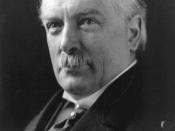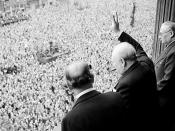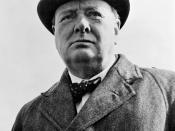Tanks did not play a very big role in World War One, but they became a new war machine which proved to be very important in wars after World War One.
The caterpillar track (on which the tank traveled) was first designed in 1770 by Richard Edgeworth. The Crimean War used a small number of tractors to maneuver around the muddy battlefield. The development of the internal combustion engine in 1885 by Nikolaus August Otto, a tractor was constructed in the U.S. by the Holt Company which used Edgeworth's caterpillar tracks. It was suggested to use it for military purposed but the suggestion was never acted upon.
In 1899 Frederick Simms designed what he termed a "motor-war car". It had an engine from Daimler, a bullet-proof casing and armed with two revolving machine guns. However, offered to the British army, it was dismissed as of little use. Lord Kitchener regarded it as "a pretty mechanical toy".
The British War Office lacked interest in the machine's potential. But then a British army officer, Colonel Ernest Swinton, remained enthusiastic about tanks' great potential, especially in breaking through enemy trench defenses. Swinton organized a demonstration of the Killen-Strait vehicle to senior politicians in June 1915, almost a year after the war was underway.
The demonstration was attended by two future British Prime Ministers, David Lloyd George and Winston Churchill. During the demonstration the tractor successfully demonstrated its ability to cut through barbed wire entanglement and both Churchill and George were impressed by its potential. Churchill, with Swinton's urging, sponsored the establishment of the Landships Committee to investigate the potential of this new weapon. The name "tank" didn't exist for it back then and it was seen as a sea-going warship on land, so it was called a "landship". Soon the first landship was...


